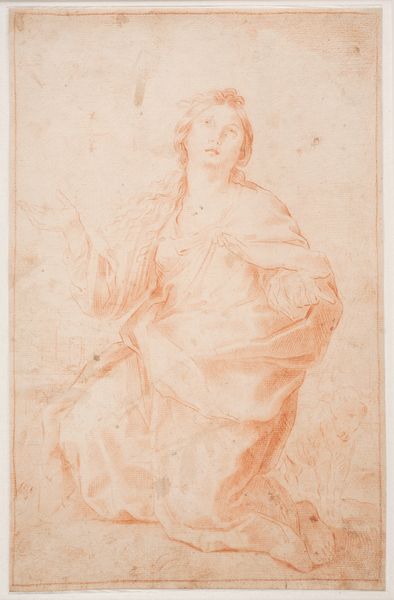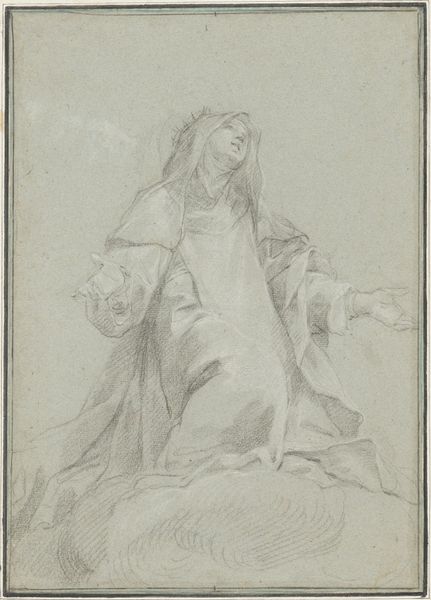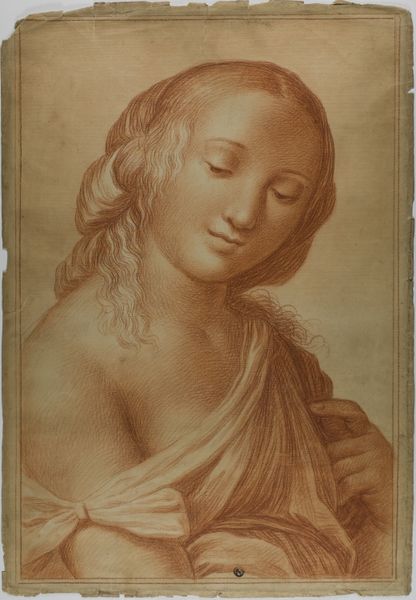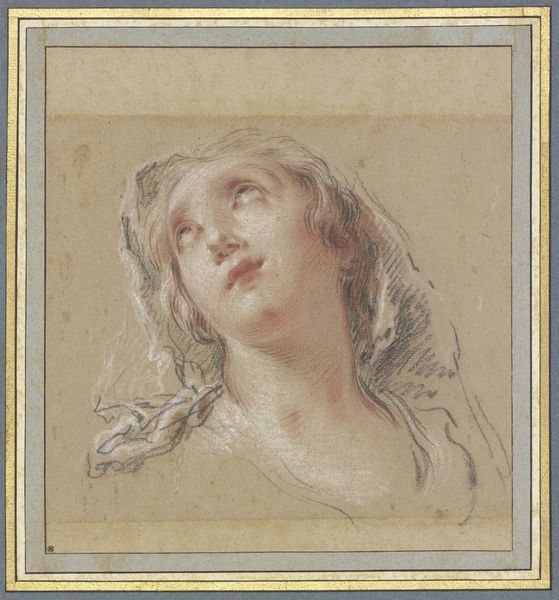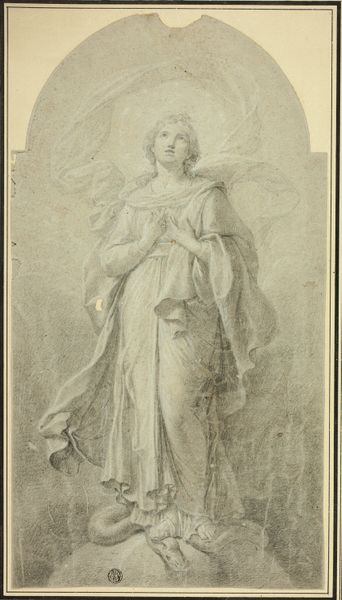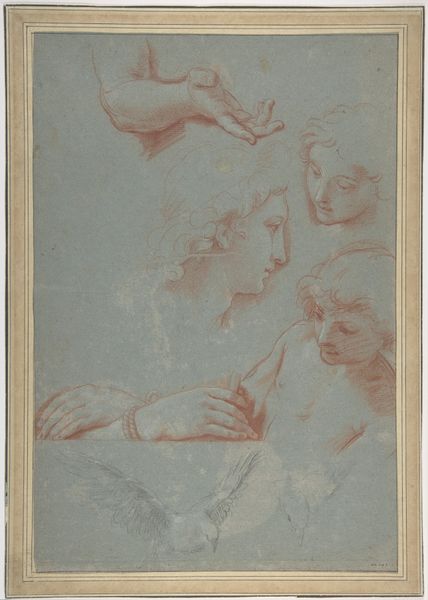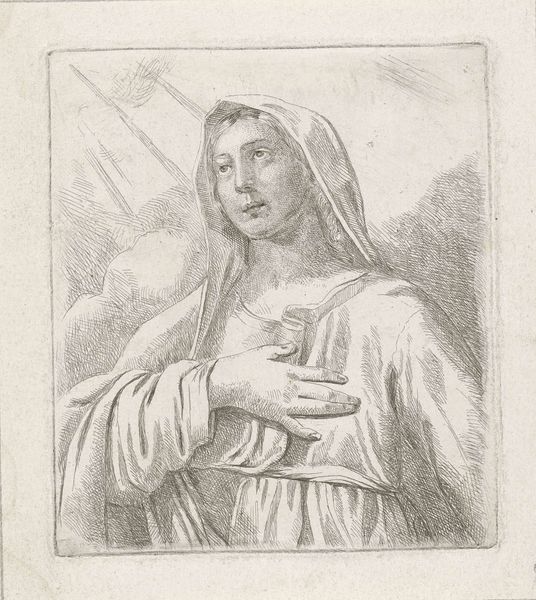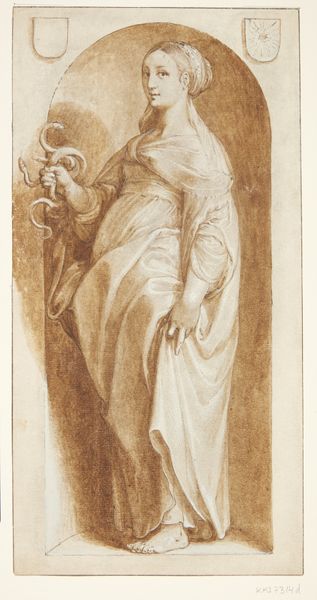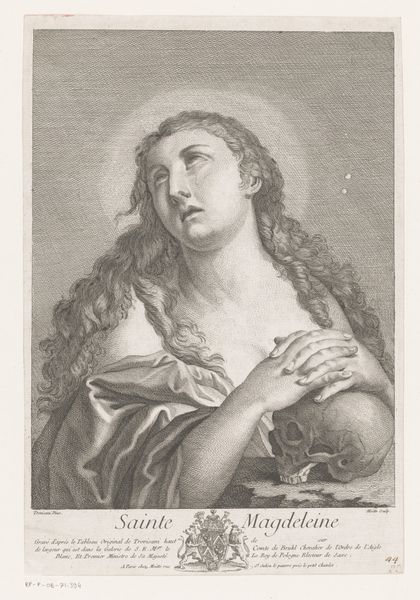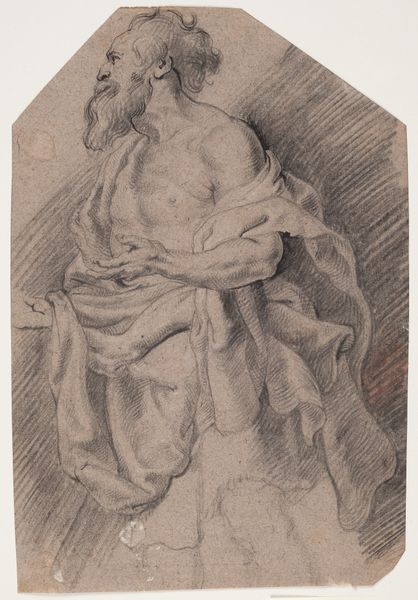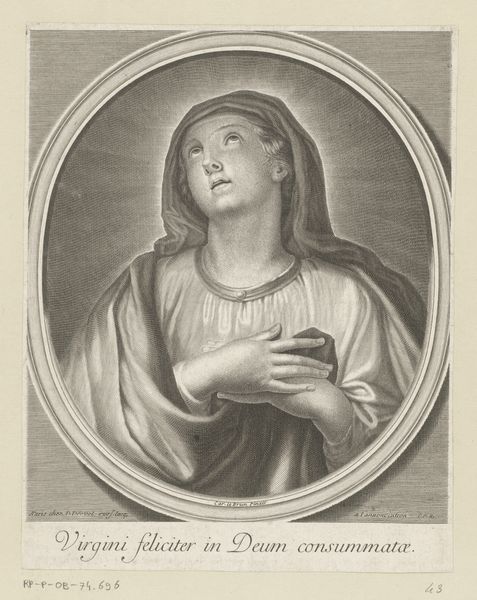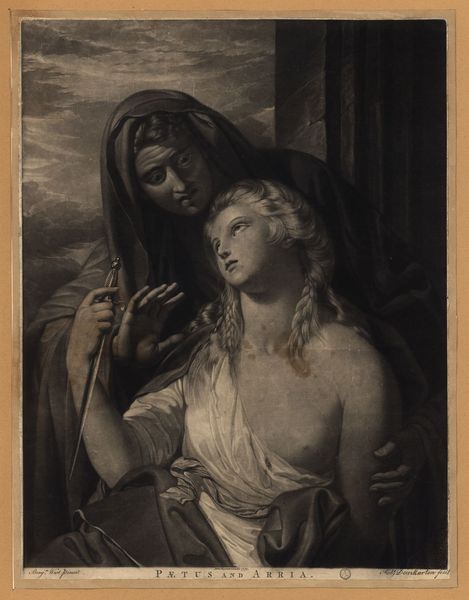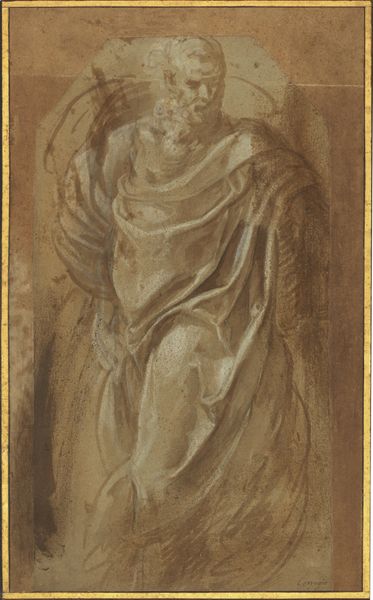
Dimensions: height 86.0 cm, width 67.0 cm, height 102.5 cm, width 85.5 cm, depth 6 cm
Copyright: Rijks Museum: Open Domain
Curator: This is a tapestry crafted by the Manufacture Royale des Gobelins sometime between 1750 and 1800, titled "The Repentant Mary Magdalene." Editor: The raw emotion of the face is captivating. The slight upward gaze, the almost pained expression... It feels so vulnerable, so raw. There’s a definite Rococo softness to it all. Curator: Absolutely. Gobelins tapestries of this period were often commissioned by the French aristocracy, and "Mary Magdalene" resonated strongly within that context. As a figure representing repentance and redemption, she provided a powerful moralizing theme but softened to fit the period’s delicate sensibility. Editor: Note how she is clasping her hands in prayer, open book resting at her lap. The book may be more than simply the object she holds, however. We also get her in the familiar symbol of rebirth. The iconography suggests that her physical appearance does not overshadow her emotional state or her inner essence. Curator: Indeed. The Magdalen as an art historical trope reflects shifts in power and visibility. Her story enabled institutions of faith to control a potentially disruptive narrative. She goes from a biblical outcast to almost the patron saint of lost women, or a penitent symbol for aristocrats dealing with their own internal dramas. Editor: She's always carried that duality: sin and sainthood intertwined. That makes her continually fascinating, a rich wellspring of psychological symbolism, almost a reflection of inner turmoil in physical form. The artists have used those light shades very efficiently to communicate that emotional distress. Curator: Tapestries such as this also provided opportunities for Gobelins artists to display technical mastery, the delicate shading giving texture to her hair and skin to capture subtleties of light, or emotions as you stated. Beyond its religious associations, the image functioned as a symbol of French artistic and manufacturing supremacy, both woven tightly into the image we view here today. Editor: I appreciate seeing how cultural memory persists. A single artwork gives fresh emotional understanding. It enriches understanding about historical expectations around gender and power at this historical juncture. Curator: Indeed. "The Repentant Mary Magdalene," when examined in its own light, allows one a peek at social, cultural and institutional layers surrounding her continued importance in our time.
Comments
No comments
Be the first to comment and join the conversation on the ultimate creative platform.
